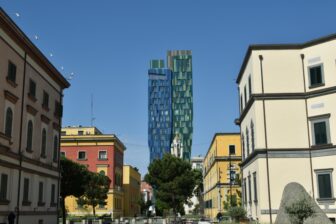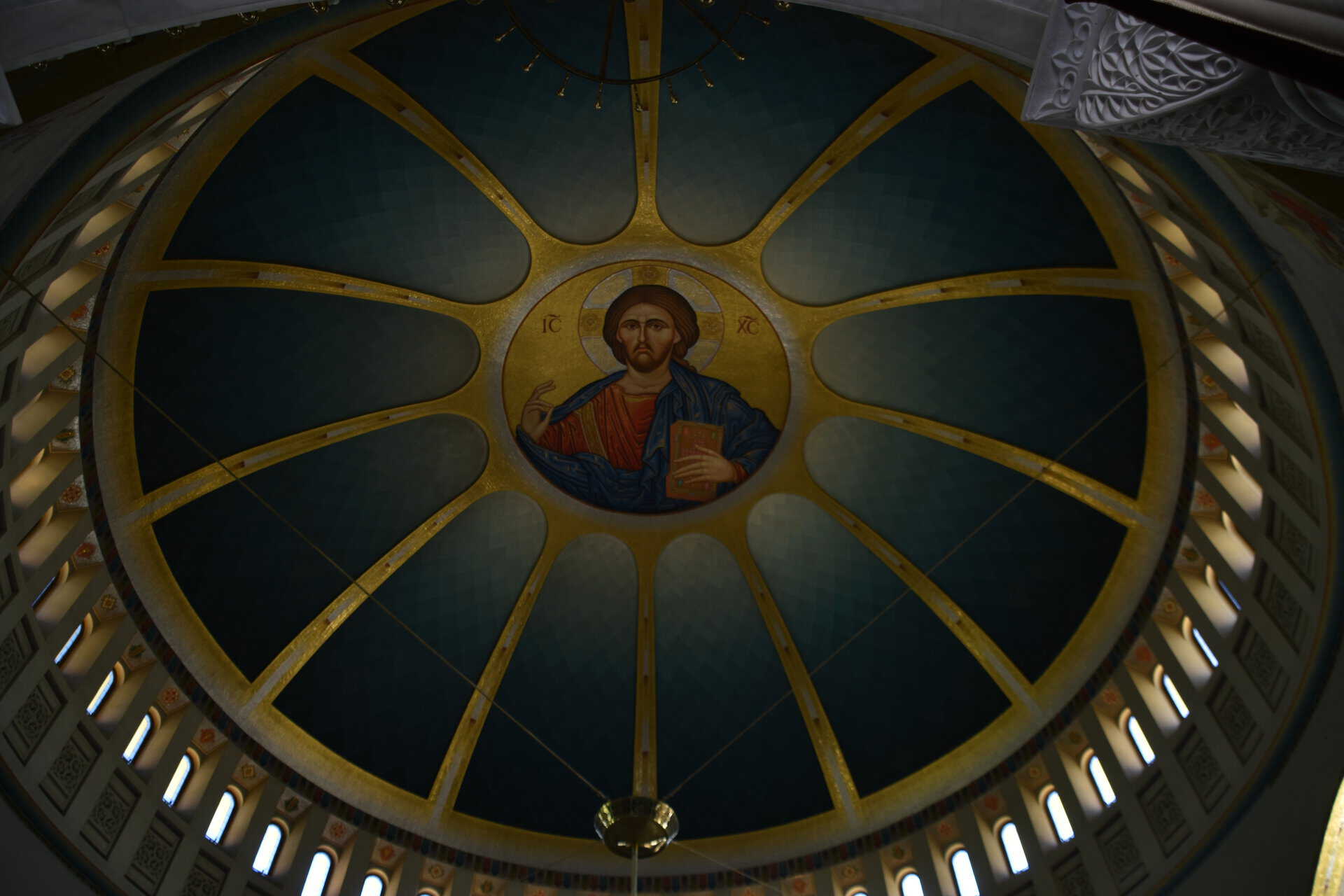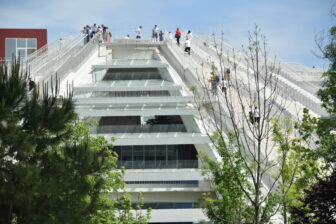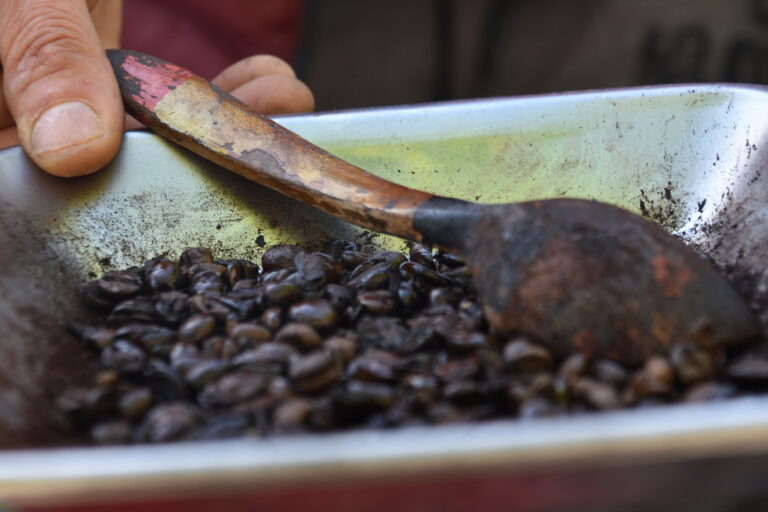
[Apr. 2024] The last place we visited in Gjirokaster, an old town in Albania, was a shop that demonstrated how to make traditional coffee.
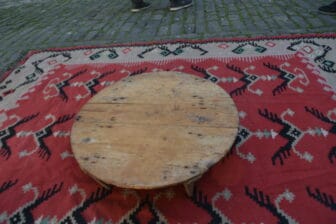
A kilim was laid on the ground, and on top of that was a low circular table like the one we saw in the museum.
We sat on the low benches set up around it.
The lady at the shop explained various things, and the man demonstrated.
First, we were served fig jam.
After licking it, we then drank rakia.
Rakia is a strong, clear alcoholic drink with an alcohol content of 40% that is made from grapes.
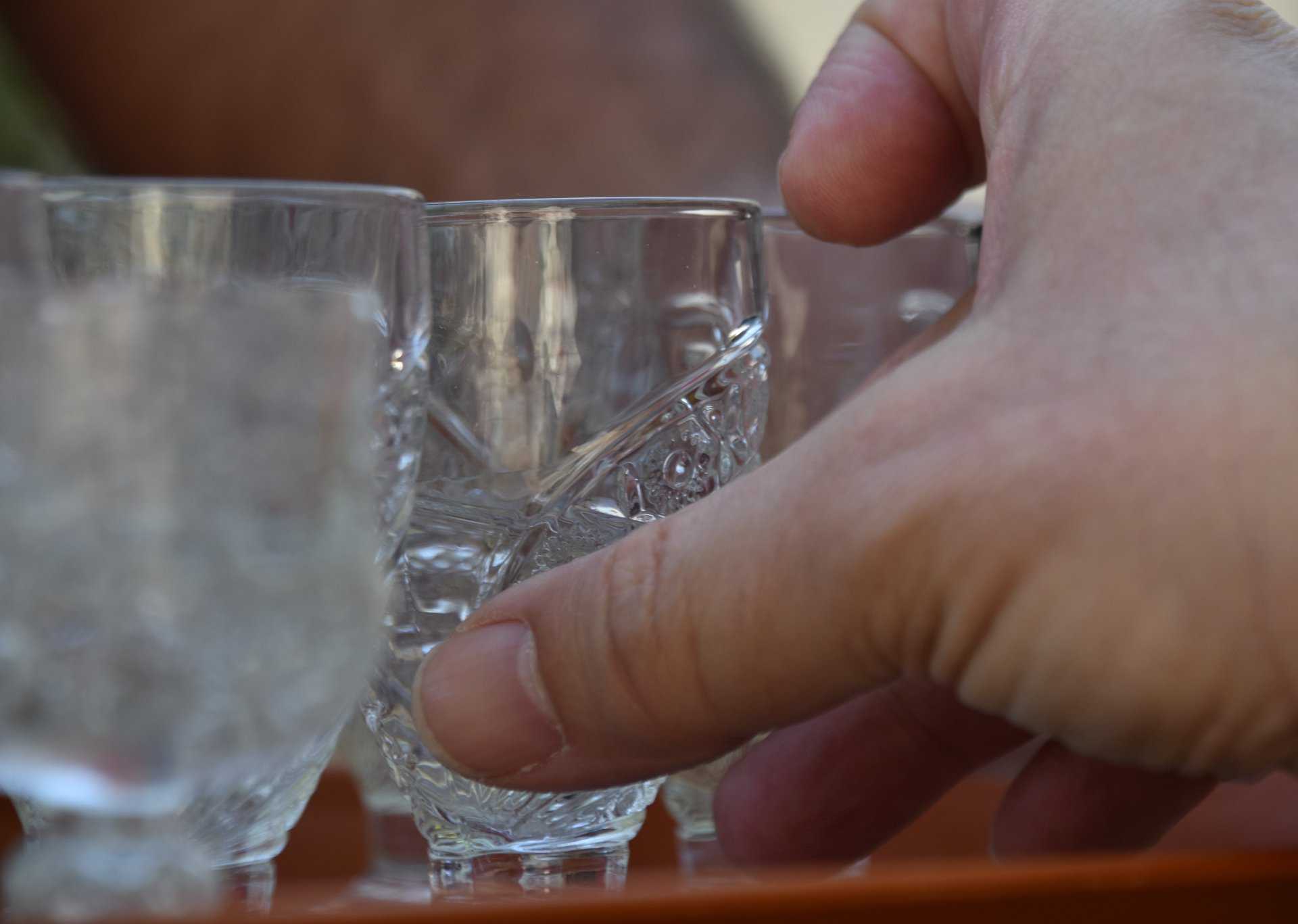
It is very similar to Italian grappa
Finally, the main dish: coffee.
First, 100 grams of coffee beans were roasted over a woodfire.
Apparently, during the communist era, each household was provided with 100 grams of coffee beans per month.
100 grams is only a handful.
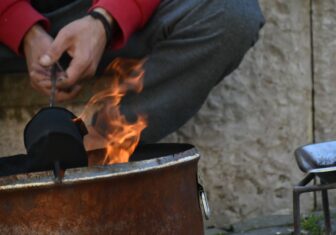
They had a stove that was used for cooking everything back then, and they roasted the coffee on it, but apparently they would traditionally use woodfire.
Our guide, Giorgio, said that when he was a child he was in charge of roasting coffee, and he remembered being severely scolded if he burned such precious coffee.
The coffee is done when it’s shiny, but if the skin comes off, it’s too humid and must be thrown away.
Then the roasted beans are put into a stone mill and pounded.
Apparently, 800 to 1000 poundings makes it just the right powder.
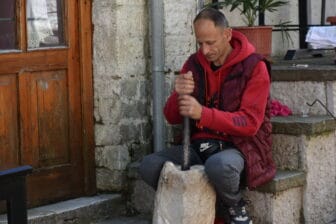
We were told that the coffee here has a unique flavour thanks to this stone mill.
It was what we usually call Turkish coffee, and I could not get the “special flavour” from it, though.
The coffee we were served was made with the powder from the demonstration for tourists the day before.
It doesn’t matter where the beans are from, but they usually use a mix of young and old beans.
Apparently, the beans that first came to this town were from Yemen.
It was definitely geared towards group tourists, but these kinds of events are fun.

